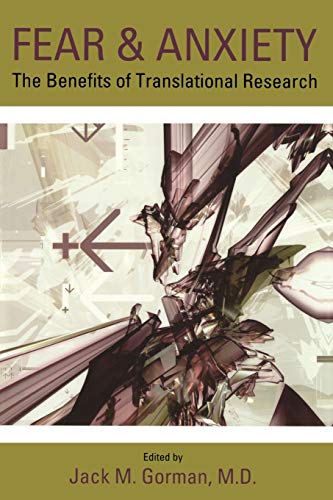Fear and Anxiety: The Benefits of Translational Research - Softcover

"synopsis" may belong to another edition of this title.
"In my opinion, this book constitutes one of the best contributions so far in the fields of neuroscience and psychiatry. The outcomes of translational research along the lines of psychosocial and psychopharmacological approaches, as addressed in this book, have permitted the understanding of the mechanism inherent in anxiety disorders to a level never reached before.... As a psychosocially oriented psychiatrist, I will always very much value this book in my academic and scientific work. Thus, I strongly recommend it to psychiatrists, neuroscientists, and mental health professionals at large whose work is deeply rooted in the biopsychosocial model."-- "Pedro Ruiz, M.D., American Journal of Psychiatry", "January 2005"
"About this title" may belong to another edition of this title.
- PublisherAmerican Psychiatric Association Publishing
- Publication date2004
- ISBN 10 1585621498
- ISBN 13 9781585621491
- BindingPaperback
- Number of pages302
- EditorGorman MD Jack M.
Shipping:
£ 2.94
Within U.S.A.
Top Search Results from the AbeBooks Marketplace
Fear and Anxiety: The Benefits of Translational Research
Book Description Paperback. Condition: Good. Connecting readers with great books since 1972! Used textbooks may not include companion materials such as access codes, etc. May have some wear or writing/highlighting. We ship orders daily and Customer Service is our top priority!. Seller Inventory # S_325968901
Fear and Anxiety: The Benefits of Translational Research
Book Description Paperback. Condition: Good. No Jacket. Pages can have notes/highlighting. Spine may show signs of wear. ~ ThriftBooks: Read More, Spend Less 0.97. Seller Inventory # G1585621498I3N00
Fear and Anxiety: The Benefits of Translational Research (American Psychopathological Association)
Book Description Paperback. Condition: As New. American Psychiatric Publishing; Washington, 2003. Trade paperback. A Near Fine, binding firm, trace handling marks, mild cover edge/corner wear, a nice, clean and unmarked copy in wraps. 8vo[octavo or approx. 6 x 9], 284pp., indexed. We pack securely and ship daily w/delivery confirmation on every book. The picture on the listing page is of the actual book for sale. Additional Scan(s) are available for any item, please inquire.Please note: Oversized books/sets MAY require additional postage then what is quoted for 2.2lb book. Seller Inventory # SKU1035313

